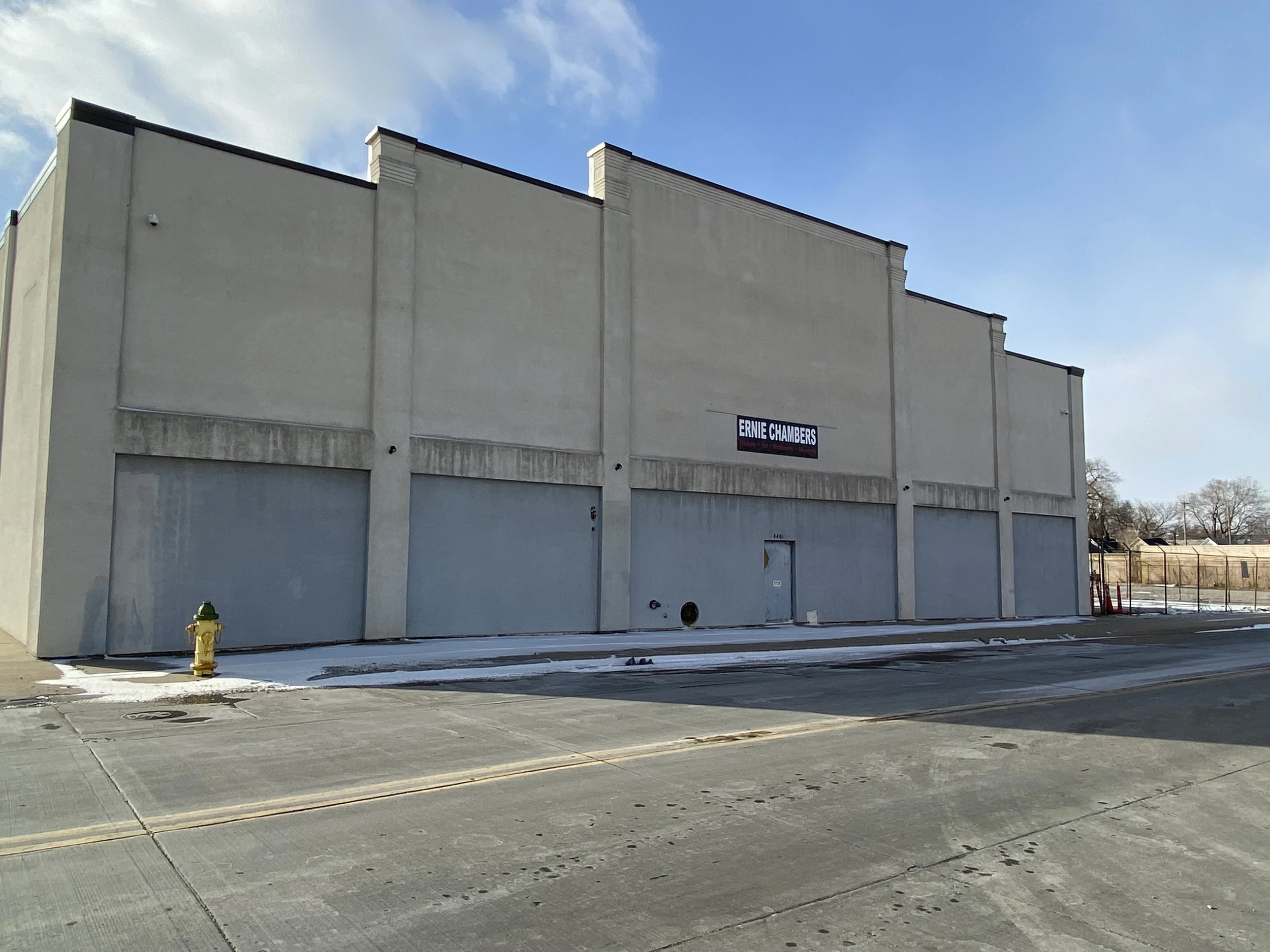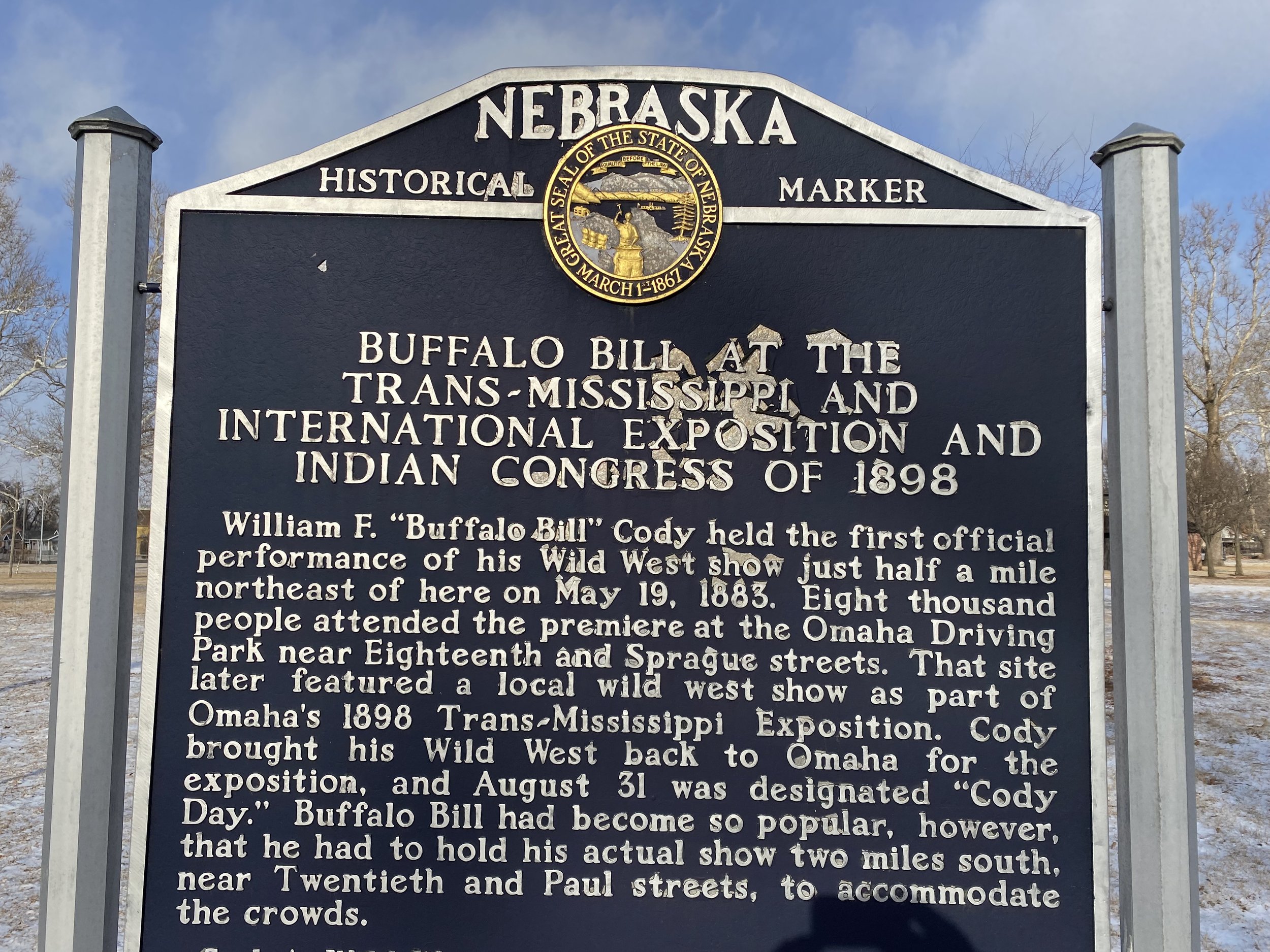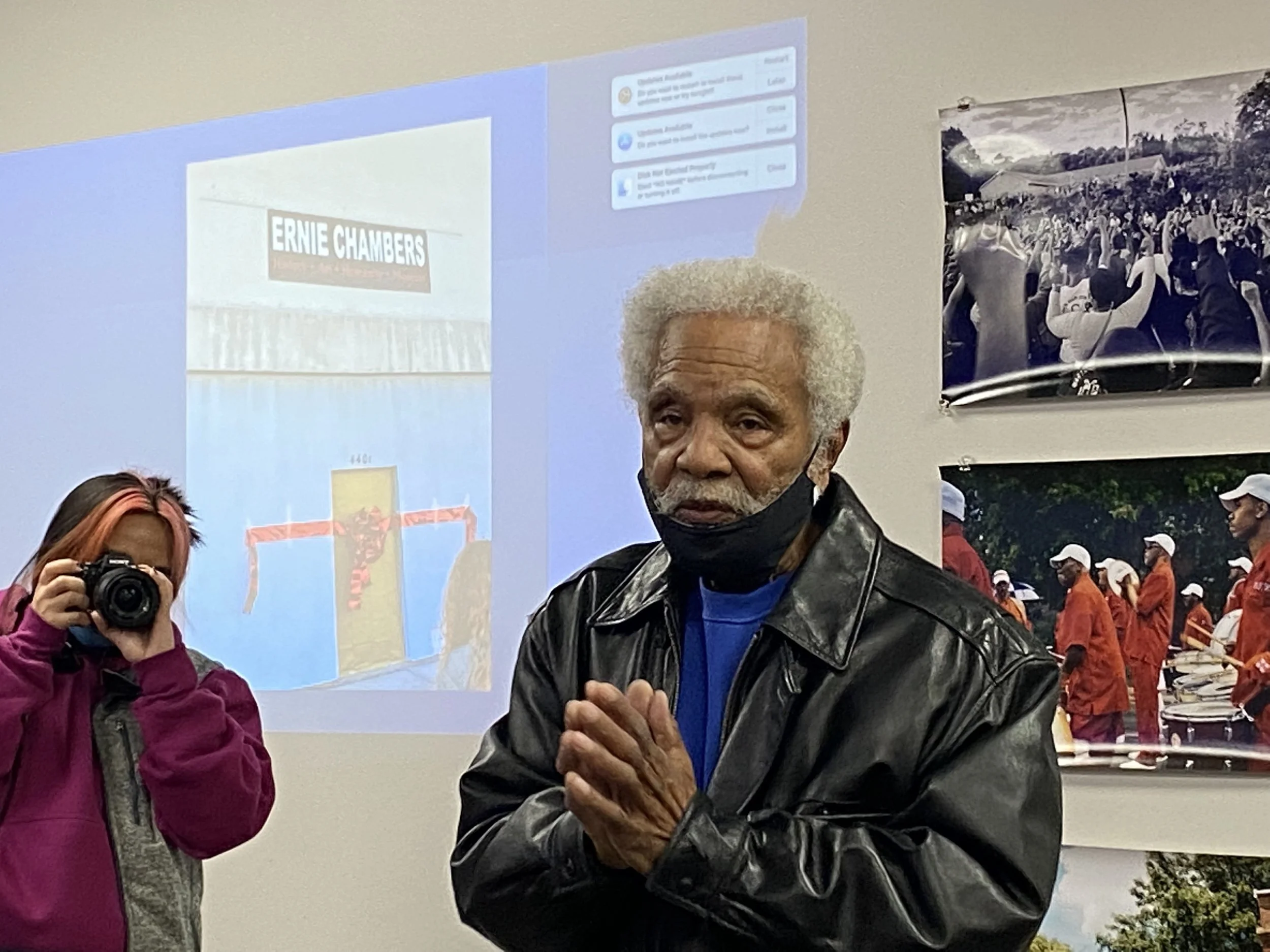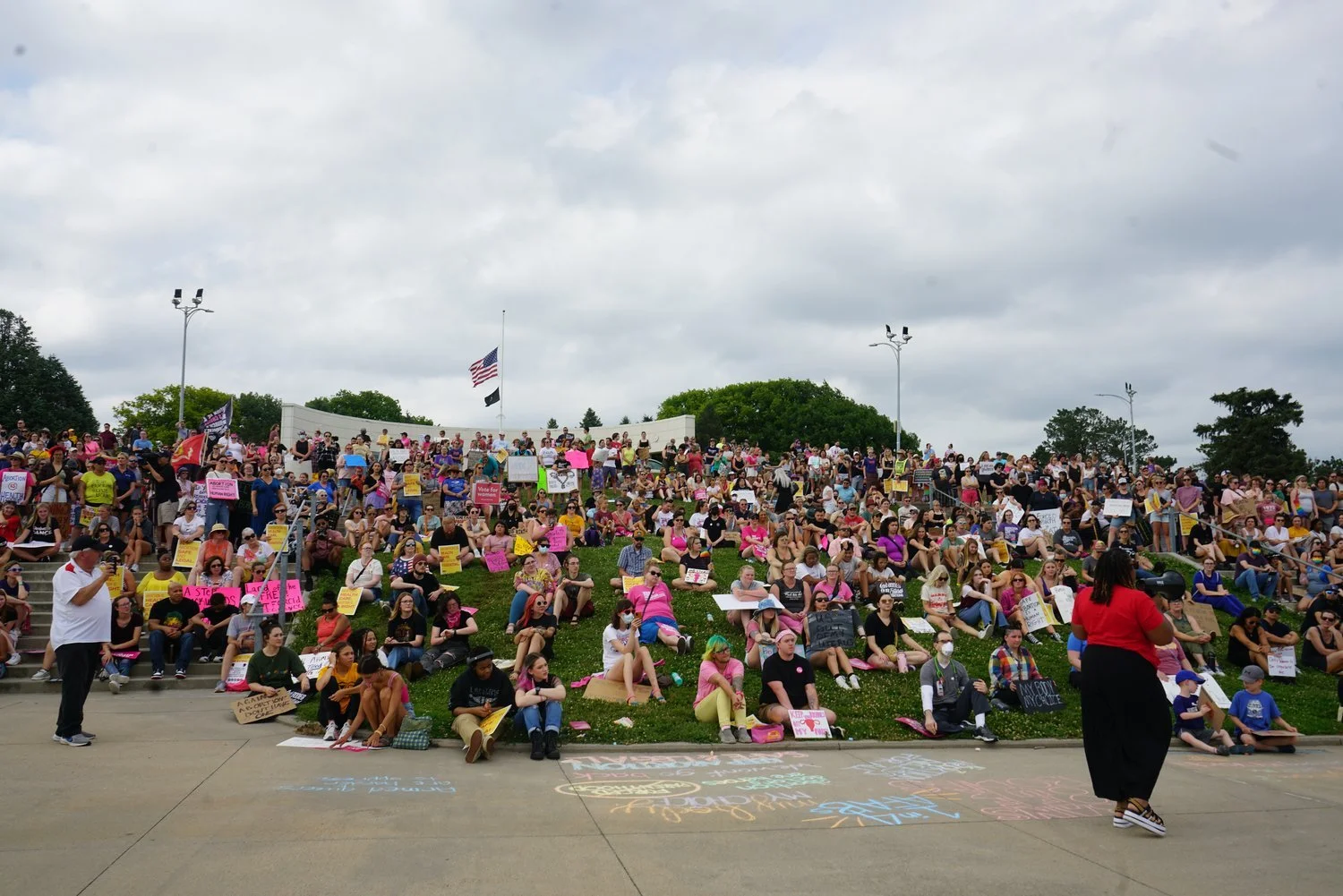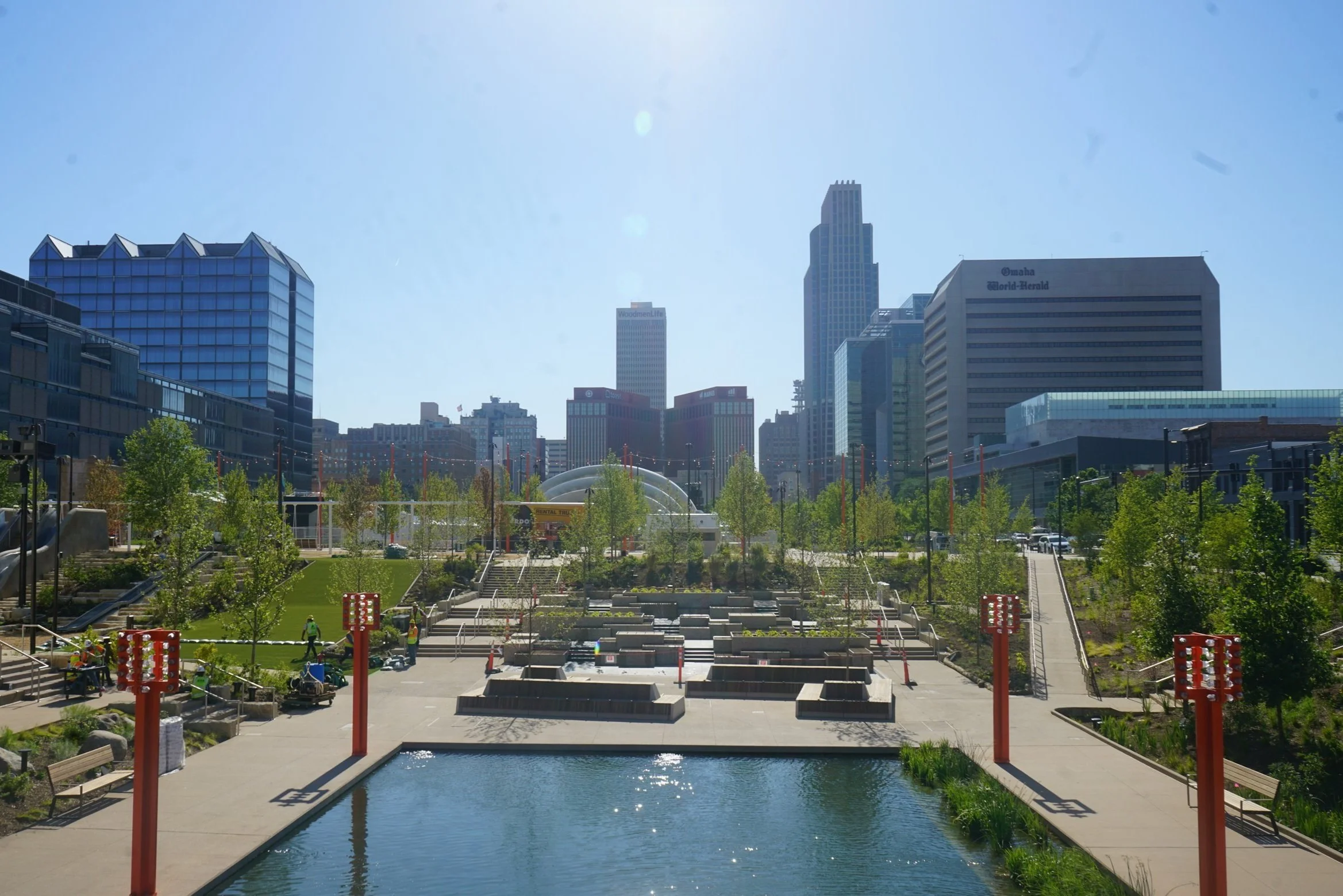The Future Ernie Chambers Museum and the Lost City of Saratoga
Image credit: Lyndsay Dunn NOISE
By Kietryn Zychal
The area of North Omaha where the Ernie Chambers History-Arts-Humanities Museum will be located, near 21st and Ames, was once part of a frontier town called Saratoga. Museum founder Gayla Lee Chambers, daughter of Nebraska’s longest serving state senator, teamed up with architectural historian Melissa Dirr Gengler of Historic Resources Group (HRG) to unearth some facts about a boom town abandoned by its investors, long ago swallowed by Omaha’s northward expansion.
Lee Chambers and Gengler have asked the city to expand a nearby “economic vitality preservation district” to include the museum in order to facilitate development in the area. The heart of Saratoga (and the designated district) is at 24th and Ames but the museum is a few blocks to the east.
Gengler, Lee Chambers and former Sen. Chambers gave a presentation at the Fabric Lab on Feb. 17 as part of Preston Love’s “town hall” series of community events. The highlight of the evening occurred when Chambers, 84, spontaneously did 30 push ups while the crowd cheered him on.
Things started off a little more staid with Gengler showing slides of old maps and buildings while providing a brief history of Saratoga’s origin. “It was a speculative land development company. One guy, Erastus Beadle, who came from Saratoga Springs, NY speculated and bought a bunch of land and came here to establish his town. He wound up only staying for a couple of years,” she explained, leaving because the town did not make money for the investors.
Beadle had laid claim to a bend in the Missouri River that he named Sulphur Springs. Carter Lake had not been formed yet. (According to Northomahahistory.com, Saratoga once extended west from the river to 56th St., and at least from Locust St. to Kansas Ave.) When the speculators pulled out, others continued to settle and develop Saratoga.
Saratoga School in 1885. Northomahahistory.com
Gengler showed photos of notable landmarks in the area including the first Saratoga school, the Suburban Theatre and the Northstar Theater (which seated 688 people) where both live performances and movies were shown, the Beltline Railway which made a loop around Omaha, and the Omaha Driving Park where Commercial Ave. is today. Both horse and automobile races were held there. An early race car made by the Franklin Company raced at the park in 1911 for a crowd of thousands. Later, the driving park closed and was platted for development.
Gengler said the Northstar Theater building still stands today, but is used for storage.
4402 N. 21st St. Photo credit: Kietryn Zychal NOISE
The last photos she showed were of a building called the Oliver, built in 1917 as the Imperial window, door and sash building. Lozier corporation later bought it and modernized the facade. It was purchased at auction by Gayla Lee Chambers for the purpose of creating a museum to her father’s legacy.
Sen. Chambers addressed the crowd next. He read the text from two historical markers on Pinkney St. in Kountze Park, which he said was considered Malcolm X Park by locals because Omaha’s famous son was born in a house at 3448 Pinkney St.
Photo credit: Kietryn Zychal NOISE
One marker states that Buffalo Bill Cody performed the first of his Wild West shows at the Omaha Driving Park in 1883. He returned to perform at the 1898 Trans Mississippi Exposition in front of blockbuster crowds. Cody staged his Wild West shows for 30 years in 12 countries for millions of people, but he got his start in North Omaha. The other marker commemorates that Kountze Park is located on the site of the 1898 exposition fairgrounds which extended from Ames to Binney and 13th St. to 24th St.
Chambers veered off script at this point to regale the crowd with oft-told stories from his childhood in Omaha as well as his 46 years in the legislature. The moral of repeating the story about classmates in the 1940s laughing at him - the only Black child in the room– while the teacher read “Little Black Sambo” is to show the moment he learned how to survive in a hostile environment. He sat very still. He remembered sweating in the hot classroom while trying to be invisible.
“But, when I became a man, in all the years in between that child and becoming a man, I never took anything off anybody white. I didn’t care who it was. If something was said to me or done to me, and I had to take a whipping, I would take a whipping but I was not going to swallow spit and look down as though I owe this white person something.”
That bravery accompanied him into the legislature. He made them listen to him. He said he owned the legislature. “My enemies say that I changed the way the legislature operated. I told those white people the story that I told you of Little Black Sambo. And I said, ‘If your kind had not done it, as they did it to that Black child, you wouldn’t have to deal with a Black man that you’ve got here running your legislature now.’”
He marveled that term limits were passed specifically to get him out of office. To him, the fact that he was voted back in meant, “You have made me your God. In Revelations there’s a verse where God is allegedly speaking and says, ‘I am the Alpha and the Omega. The first and the last.’ Why am I your Alpha? Because I was the first one term limited out and came back. And what about the last? Because of term limits, nobody again will be able to serve as long as I did. So, I am the Alpha and the Omega of the legislature, in other words, your God and you can’t do anything about me.”
After the laughter died down, he said, “I hope you young people will understand that whatever has happened to you up to this point, it’s not the end of the world. You are going to have to believe in yourself. Trust your judgment. Never give up. Never quit. Don’t be discouraged and don’t worry about what anybody says,” because “words are but words.”
“I hope you young people will understand that whatever has happened to you up to this point, it’s not the end of the world. You are going to have to believe in yourself. Trust your judgment. Never give up. Never quit. Don’t be discouraged and don’t worry about what anybody says…because words are but words.”
Finally, Chambers told the story about painting a target on a sweatshirt and going to Norfolk at “high noon” because someone from there had said they wanted to shoot him. He went to a park, a restaurant (though he did not eat) and was interviewed on a local radio station. Nobody shot him.
He closed with his signature line by Popeye, “I am what I am and that’s all that I am.”
(1) Sen. Ernie Chambers; (2) with Preston Love, Jr.; (3) with Gayla Lee Chambers; (4) Melissa Dirr Gengler
Chambers’ daughter spoke last. He introduced her by saying, “Daughters will have their fathers do things that nobody else can.” He said he would allow no one but his daughter to spearhead a museum in his honor.
“But, I wanted to be the one, when the time comes, to make sure that the true stories are told about my father. And the best people that can do it are his children.”
Lee Chambers explained, “One of the things I wanted to do as a young girl was to commend my father for all his hard work. As he was out fighting for the community, it took a little damper on us as children. And my mother half the time was scared to death of the things he was out there doing. But, I wanted to be the one, when the time comes, to make sure that the true stories are told about my father. And the best people that can do it are his children.”
Lessons learned from the demise of Love’s Jazz and Arts Center
She continued, “I look at Preston [Love, Jr.], and he doesn’t know, I’m always advocating for him and the work that his father has done in this community. And it saddens me because when they did the Preston Love [Jazz and Arts Center] I always thought that Preston Love [Jr.] was part of it.”
“How can you not include a legacy of a great person?,” she asked.
The original Love’s Jazz and Arts Center (LJAC) was founded circa 2005 by admirers of Preston Love, Sr. who were not family members. When the city decided not to renew LJAC’s lease for the building at 2510 N. 24th St., Preston Love, Sr. was asked to be part of future plans for the building and an organization honoring his father’s jazz legacy.
Then, in 2021, the 24th Street Business Improvement District excluded Preston Love, Jr. from being involved in future plans, even refusing to rent office space to him in the building that had once been named for his father.
Chambers spoke of his great affection for Preston Love, Sr. and his successful negotiations to steer turnback tax funds from construction of a downtown hotel toward the creation of a jazz center in his honor, long before LJAC was founded.
Lee Chambers explained that she testified before the legislature this week in support of LB 1205, a bill by Sen. Terrell McKinney to have the state enter into a partnership to develop a museum in honor of her father.
She said plans for the Ernie Chambers History-Arts-Humanities Museum include a library, performing arts center, a ballroom, a dance studio, a media center, an event space with outdoor deck, a full kitchen and art galleries.



